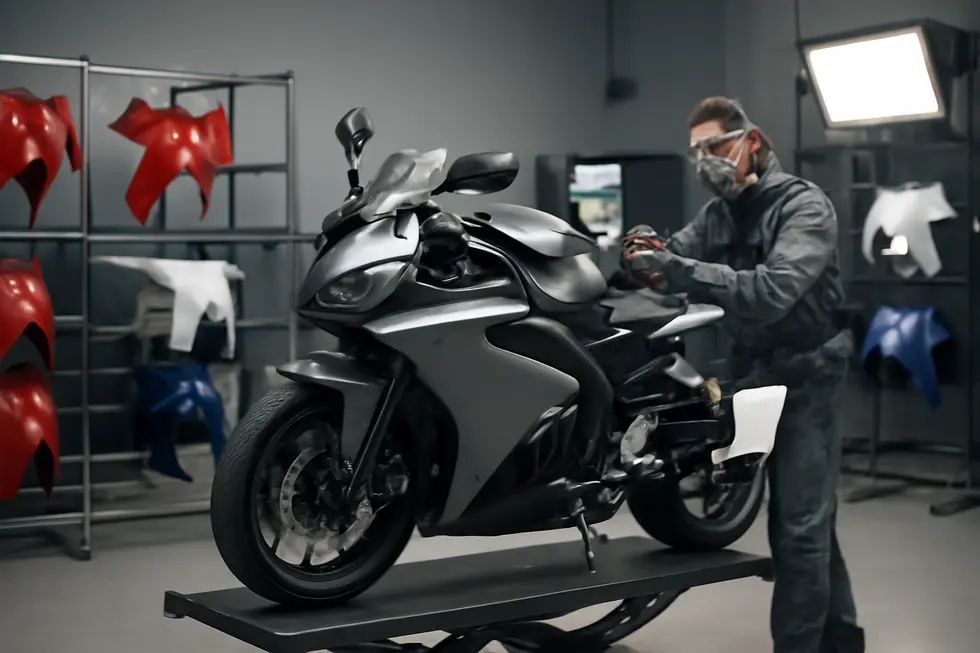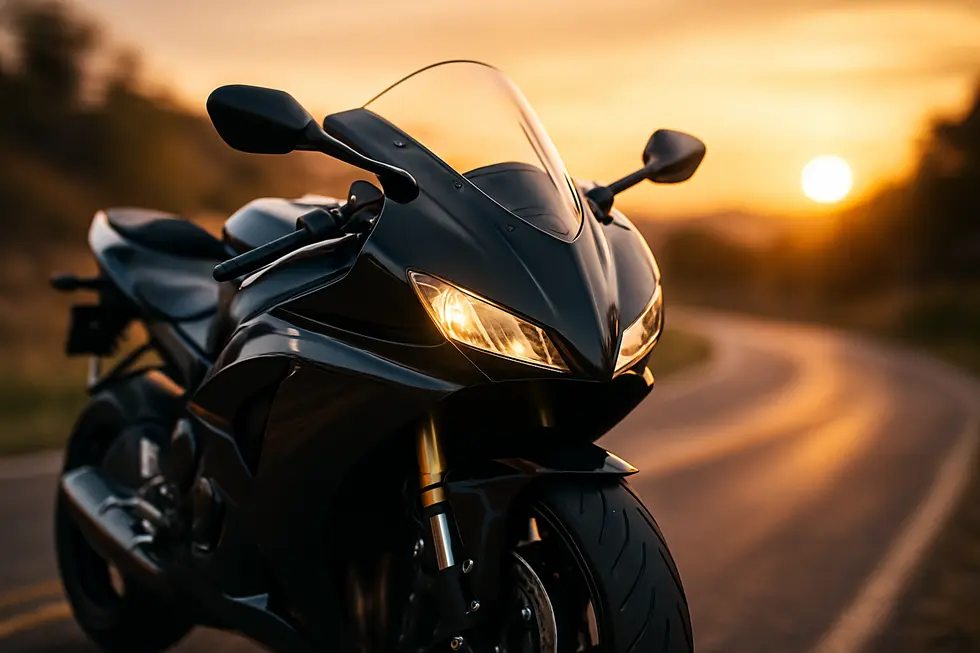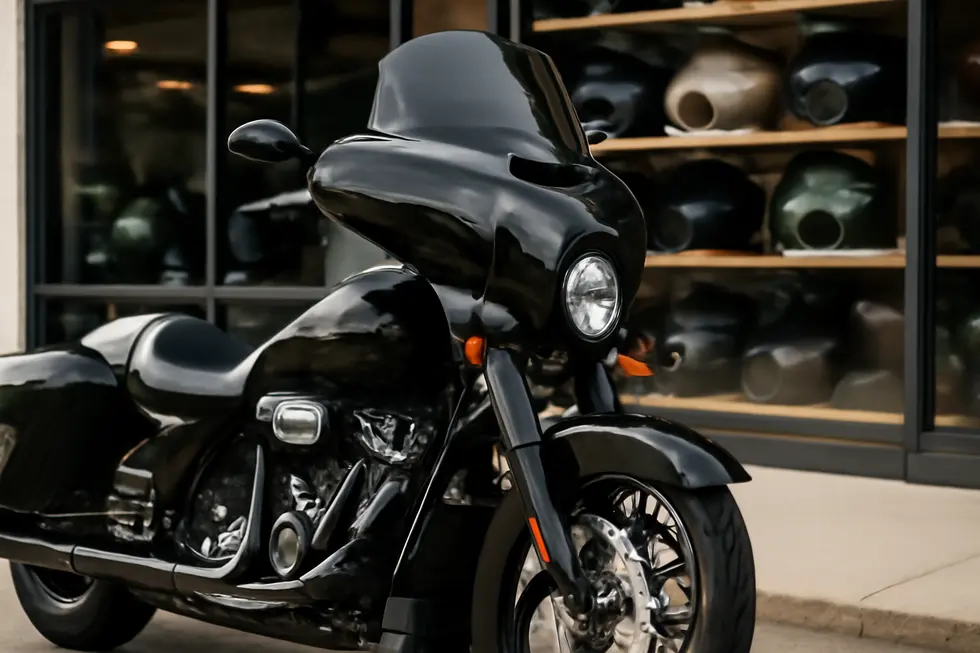Maximizing Motorcycle Efficiency: The Crucial Role of Fairings
August 17, 2025 | by summitfairings
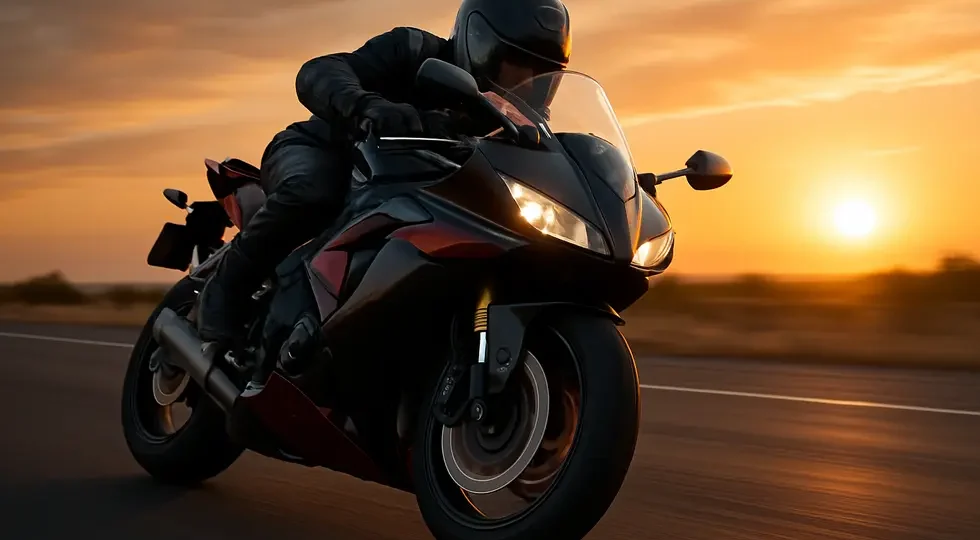
Introduction
Motorcycle fairings are more than just styling elements—they are engineered components that significantly influence performance, rider protection, and operational efficiency. For business owners in the motorcycle industry, understanding the impact of fairings unlocks opportunities to enhance product offerings, improve customer satisfaction, and boost competitive advantage. This article unpacks the aerodynamic benefits fairings provide, details the various types and their functional designs, and examines the materials and customization features essential for durability and style. Together, these chapters offer a comprehensive perspective that will inform strategic decisions related to inventory, product development, and marketing within the motorcycle sector.
Tables of Contents
Chapter 1: Aerodynamics and Performance Impact of Fairings on a Motorcycle
- How Motorcycle Fairings Optimize Drag Reduction and Boost Fuel Efficiency
- Enhancing Rider Stability and Comfort Through Advanced Fairing Aerodynamics
- Downforce Dynamics: How Motorcycle Fairings Enhance Grip and Handling Precision
- Balancing Race-Winning Aerodynamics and Safety: Regulatory Dynamics Shaping Motorcycle Fairings
- Optimizing Motorcycle Fairing Design to Enhance Laminar Airflow and Riding Stability
Chapter 2: Types and Functional Design of Fairings on a Motorcycle
- Full Motorcycle Fairings: Enhancing Aerodynamics and Rider Protection Through Advanced Design
- Half Fairings: Harmonizing Wind Protection with Engine Accessibility
- Streamlined Essentials: The Aerodynamic and Protective Roles of Quarter, Tank, and Tail Fairings
- The Role of Advanced Materials and Design in Motorcycle Fairing Durability and Lightweight Efficiency
- Blending Functionality and Style: How Motorcycle Fairings Enhance Performance and Personalization
Chapter 3: Material Composition and Customization Features of Fairings on a Motorcycle
- Balancing Strength and Style: Exploring Carbon Fiber and ABS Plastic in Motorcycle Fairings
- Creative Customization of Motorcycle Fairings: Colors, Textures, and Personalized Designs
- Optimizing Aerodynamics and Performance Through Advanced Materials and Customizable Fairing Designs
- Precision Mounting Systems and Customizable Hardware for Optimal Fairing Fit and Durability
- How Advanced Materials and Tailored Designs Shape the Motorcycle Fairings Market and Economy
Chapter 1: Aerodynamics and Performance Impact of Fairings on a Motorcycle
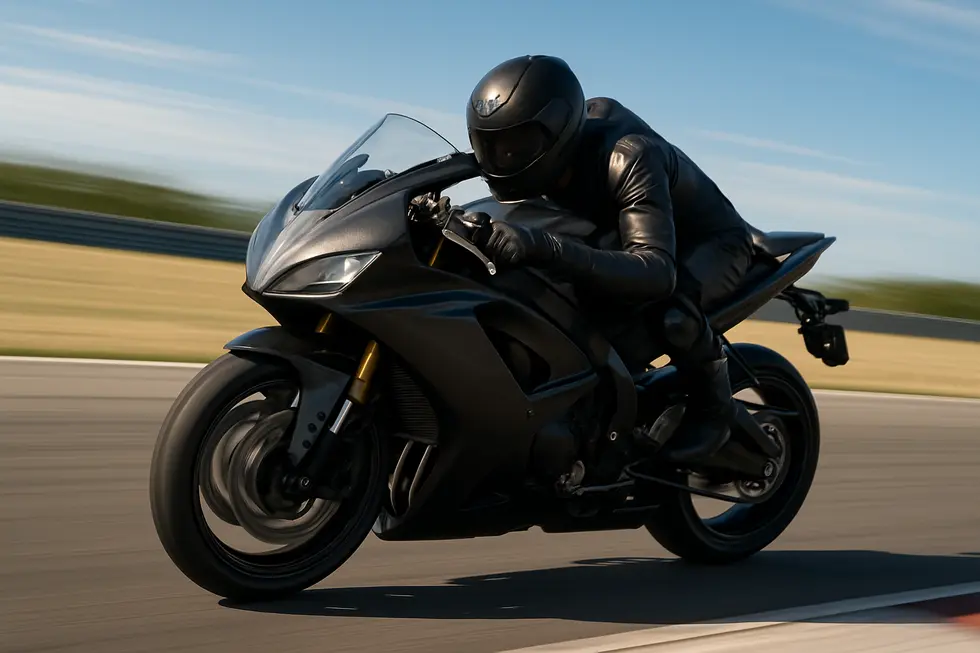
1. How Motorcycle Fairings Optimize Drag Reduction and Boost Fuel Efficiency
Motorcycle fairings play a pivotal role in enhancing aerodynamic performance by significantly reducing drag, which directly contributes to better fuel efficiency and overall motorcycle capability. By enveloping the bike’s frame and rider, fairings smooth the airflow, minimizing turbulence and wind resistance that typically slow a motorcycle. This streamlined shape reduces the engine’s workload, allowing it to maintain speed with less effort and, consequently, consume less fuel, especially noticeable at highway speeds.
Beyond enhancing speed and fuel economy, fairings also contribute to generating aerodynamic downforce. This downforce subtly presses the motorcycle onto the road, improving traction, which in turn elevates handling, braking stability, and cornering control. However, designing fairings requires a balance: while larger or fuller fairings maximize aerodynamic gains, they can restrict steering inputs and affect maneuverability if not optimized.
In the context of racing motorcycles, full fairings are standard because they cover the front, sides, and often the lower sections, dramatically cutting drag and protecting both the rider and critical mechanical parts. This coverage allows racers to achieve greater velocity with reduced engine strain and enhances control during high-speed courses.
Moreover, fairings improve rider comfort by shielding against relentless wind buffeting, which otherwise increases rider fatigue and impacts focus. This aerodynamic advantage benefits everyday riders as much as race enthusiasts, offering improved mileage and a more stable ride.
For a detailed analysis of drag reduction and fuel efficiency improvements, see the July 2025 YouTube video “How Does Motorcycle Aerodynamics Affect Fuel Efficiency?”. Explore more about quality fairing options and their varieties at Discover Affordable Motorcycle Fairings at Summit Fairings.
External link for further reading: Motor Sport Magazine on MotoGP aero bans and downforce
2. Enhancing Rider Stability and Comfort Through Advanced Fairing Aerodynamics
Motorcycle fairings do far more than simply shape a bike’s outward appearance—they create a carefully engineered aerodynamic environment that profoundly affects rider stability and comfort. By streamlining airflow around the motorcycle and rider, fairings reduce turbulent wind buffeting that can otherwise cause rider fatigue and decreased control, especially at high speeds. This aerodynamic smoothing establishes a protective “bubble” of calmer air enveloping the rider’s head and torso, allowing for prolonged focus and reduced physical strain on longer rides or intense track sessions.
Beyond easing wind pressure, modern fairings contribute to dynamic stability through subtle downforce generation. Aerodynamic features integrated into these fairings apply vertical load onto the motorcycle, pressing tires more firmly against the road. This improved grip mitigates issues like front wheel lift and unwanted wheelies at speed, rendering braking and cornering more confident and precise. Riders thus experience greater control with less need for electronic intervention, enabling smoother throttle management and handling.
While comprehensive fairings enhance smooth airflow and rider protection, their design must balance aerodynamic benefits with rider ergonomics. Excessively large or rigid fairings could slightly restrict handlebar movement, but ongoing advancements allow for ergonomic tailoring that accommodates diverse rider sizes and supports active positioning—such as leaning off during sharp turns—without sacrificing comfort or control.
The aerodynamic interplay between reducing drag and enhancing stability ultimately transforms rider experience. Effective fairing designs translate to less fatigue, improved road feel, and increased confidence in varied riding conditions. Understanding this synergy is key to appreciating why extensive fairings are a staple on high-performance and touring motorcycles alike.
For motorcycle enthusiasts exploring comprehensive options and styles, explore the best motorcycle fairings at Summit Fairings offers insightful resources and selections. Detailed technical insights into aerodynamic optimization can also be found in reviews of advanced models such as the 2025 Ducati Panigale V4 (source).
3. Downforce Dynamics: How Motorcycle Fairings Enhance Grip and Handling Precision
Motorcycle fairings contribute more than just drag reduction; they actively shape how a bike grips and handles the road by generating vital downforce. This vertical aerodynamic load presses the motorcycle firmly onto the pavement, increasing tire traction especially during demanding high-speed runs and aggressive cornering. Enhanced tire loading translates directly to improved braking power and sharper turning responsiveness, crucial for both performance riding and rider confidence.
Modern sport motorcycles often incorporate aerodynamic winglets or specialized appendages into their fairings, which create measurable downforce at speed. These features, capable of producing significant pounds of downward pressure without notably increasing drag, help counteract tendencies like front wheel lift—commonly known as wheelies—thus stabilizing the chassis while braking or accelerating hard. By maintaining optimal front-end contact, these designs facilitate safer deceleration and consistent corner entries.
Beyond downforce, fairing geometry expertly manages airflow to minimize turbulence around key mechanical parts such as radiators and oil coolers, ensuring efficient temperature regulation while shielding the rider from excessive wind buffeting. Subtle adjustments in fairing placement, such as moving leading edges rearward, enhance maneuverability by reducing unwanted aerodynamic resistance during directional changes, blending stability with agility.
In racing environments, this balance between drag reduction and downforce is carefully engineered. Regulations sometimes restrict aerodynamic elements to maintain fair competition, as excess front-end loading can significantly alter handling and race dynamics. Yet, when optimized, fairings improve overall traction and control without compromising speed.
Ultimately, fairings serve a dual role: refining aerodynamic efficiency and actively boosting handling through downforce. This synergy improves tire grip, braking precision, and cornering stability, establishing fairings as fundamental components for achieving superior riding performance under varied conditions.
For riders interested in exploring how advanced fairing designs contribute to performance and handling, the article on exploring the best motorcycle fairings offers detailed insights.
4. Balancing Race-Winning Aerodynamics and Safety: Regulatory Dynamics Shaping Motorcycle Fairings
Motorcycle fairings are pivotal in competitive racing, expertly crafted to refine aerodynamics, reduce drag, and optimize performance. In high-stakes environments like MotoGP, these aerodynamic shells not only streamline airflow around the motorcycle and rider but also generate crucial downforce that enhances tire grip. This downforce improves cornering ability, braking stability, and prevents front-wheel lift during acceleration—vital for maintaining control at extreme speeds. Advanced race fairings even integrate winglets and precise airflow channels, elevating radiator cooling efficiency and creating a protective calm air envelope around the rider, which reduces fatigue and enhances concentration.
Yet, the pursuit of aerodynamic advantage is carefully moderated by stringent regulations to ensure fair competition and rider safety. Rulemakers impose limits on the size, shape, and placement of fairing components to curb excessive downforce, which can undermine maneuverability or create hazardous handling characteristics. For example, upcoming MotoGP regulations will narrow front fairings and reposition the nose to tone down aerodynamic loads without sacrificing control, reflecting a balance between speed performance and safety concerns. These regulatory frameworks govern how far aerodynamic appendages may extend beyond critical points such as wheels and handlebars, constraining designs to maintain necessary bike responsiveness.
These intertwined technological and regulatory aspects mean that fairings are not mere styling elements but sophisticated components engineered within strict boundaries. They optimize airflow to reduce drag by up to 4% while boosting cooling system efficiency by more than 10% on race machines, directly translating into sustained race performance. The ongoing evolution of fairing designs navigates this complex landscape, marrying the relentless quest for quicker lap times with the imperative to uphold safety and equitable competition.
For riders and manufacturers seeking both aerodynamic refinement and adherence to racing standards, exploring summit fairings offerings provides insights into how advanced fairings balance form, function, and compliance.
External reference: Motorsport Magazine article reviewing MotoGP aerodynamic regulation changes ([1]).
5. Optimizing Motorcycle Fairing Design to Enhance Laminar Airflow and Riding Stability
Motorcycle fairings play a pivotal role in refining aerodynamic efficiency by sculpting the airflow that interacts with both rider and machine. Their fundamental objective is to create a seamless, streamlined profile that minimizes turbulence and drag, allowing for higher achievable speeds and enhanced control. To achieve optimal laminar airflow, designers focus on full coverage — enveloping the front, sides, and sometimes the lower belly — which significantly diminishes flow separation and wake turbulence behind the motorcycle. This comprehensive coverage smooths air movement, reducing pressure differences that sap speed and stability.
An essential element in fairing design is downforce generation. Properly shaped fairings apply aerodynamic pressure that presses the motorcycle toward the road, boosting traction during acceleration, braking, and cornering. This downforce must be balanced carefully; excessive force can cause instability or uneven tire loading, while insufficient downforce reduces grip. Fine-tuning the fairing’s dimensions and positioning—such as adjusting the upper front fairing’s width or relocating the fairing nose—helps manage these forces, improving overall handling without compromising maneuverability.
Surface finish is another critical consideration. Smooth, clean surfaces reduce airflow disruption, preserving laminar flow and minimizing drag. Regular maintenance like waxing maintains this effect, ensuring consistent performance benefits. Equally important is ensuring fairings do not hinder steering input by restricting handlebar or fork movement, which would negatively affect agility.
In competitive contexts, aerodynamic rules guide fairing shapes and sizes, pushing engineers to use advanced CFD simulations and turbulence modeling to reduce drag and optimize airflow separation while enhancing mechanical reliability. This approach balances the quest for speed with safety and race regulations.
By integrating these aerodynamic principles into design, motorcycle fairings become more than bodywork; they transform into engineered components that elevate performance through superior airflow management and stability. For more insights on the choices available to optimize your motorcycle’s fairings, visit Explore the Best Motorcycle Fairings at Summit Fairings.
Further exploration of how regulatory frameworks influence these designs is detailed in MotoGP aerodynamic guidelines.
Chapter 2: Types and Functional Design of Fairings on a Motorcycle
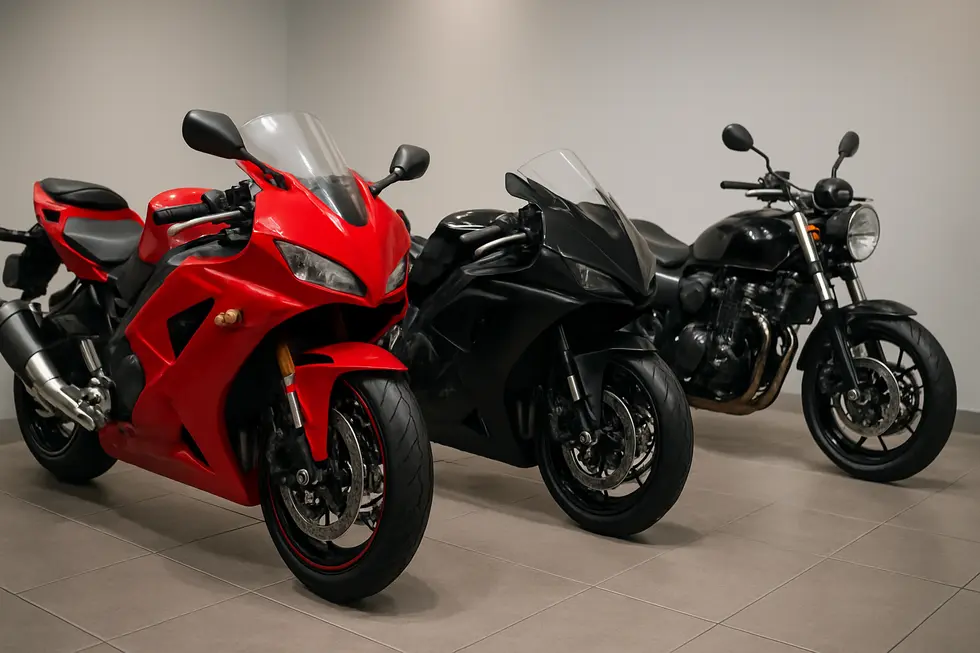
1. Full Motorcycle Fairings: Enhancing Aerodynamics and Rider Protection Through Advanced Design
Full motorcycle fairings play a pivotal role in both optimizing aerodynamic performance and protecting riders. By enveloping the motorcycle’s frame, engine, and frontal components, these fairings create a streamlined profile that significantly reduces drag. This improvement allows the bike to achieve better speed, stability, and fuel efficiency, while also shielding the rider from wind pressure, flying debris, and harsh weather conditions.
Full fairings come in diverse designs tailored to specific riding demands. Race or track fairings prioritize lightweight construction using materials such as carbon fiber or ABS plastic, achieving weight reduction crucial for speed and agility. Their aerodynamic contours often integrate wings or spoilers that generate downforce, which enhances high-speed stability and cornering grip. Complementing these features are airflow management systems—vents and ducts—that direct cooling air toward the engine and critical components, preventing overheating during aggressive performance cycles. For instance, some cutting-edge race fairings can cut drag by around 4% and improve cooling efficiency by up to 12%.
In contrast, street or commuter full fairings emphasize rider comfort and weather protection. Typically made from durable ABS plastic, these fairings include practical features like higher windshields that envelop the rider in a calmer air bubble, greatly reducing fatigue on long journeys. Beyond functionality, styles vary from subtle texture finishes to bold graphic treatments, allowing riders to personalize their bike’s appearance without compromising aerodynamic benefits.
Custom and lightweight fairings extend the design frontier by balancing strength and weight, often incorporating carbon fiber for enhanced heat resistance and durability. Many kits offer integrated lighting setups and specialized mounting hardware, delivering comprehensive upgrades that blend aesthetics with performance.
The hallmark of full fairings lies in their meticulous design choices: smooth, flowing shapes that minimize air turbulence; strategically placed spoilers to stabilize front-end dynamics; and precisely engineered vents to optimize engine cooling. Material selection further reinforces this balance of durability and weight, ensuring full fairings meet the diverse needs of both racers and daily riders alike.
For a deeper dive into the latest innovations and product options in full motorcycle fairings, explore detailed insights available at Summit Fairings.
More technical specifics on aerodynamic benefits and cooling efficiencies can be found in advanced analyses of modern race fairings.
2. Half Fairings: Harmonizing Wind Protection with Engine Accessibility
Half fairings occupy a unique space in motorcycle design, offering a thoughtful balance between aerodynamic efficiency and mechanical practicality. Typically covering the bike’s upper front—encompassing the headlight assembly and handlebars—they provide significant wind deflection to improve rider comfort at moderate to high speeds. Unlike full fairings that envelop lower engine components, half fairings intentionally leave key areas exposed, allowing easier access for routine maintenance and reducing overall weight.
These fairings manifest in diverse styles to suit different riding preferences and performance goals. Classic or retro half fairings evoke a vintage charm seen on café racers and heritage bikes, focusing on moderate wind protection around the cockpit area without compromising the bike’s mechanical visibility. This design merges aesthetic appeal with function, channeling airflow around the rider while preserving the nostalgic profile.
On the other hand, sport performance half fairings are sculpted to enhance aerodynamic flow with more aggressive contours. Some modern sportbikes integrate features such as winglets to generate downforce, while tactically placed vents promote engine cooling by extracting hot air. These elements not only reduce drag but also help stabilize the motorcycle during dynamic riding conditions, subtly contributing to handling and heat management without the bulk of a full fairing.
Custom and aftermarket half fairing kits expand stylistic and functional options further. Constructed from durable ABS plastics with precise OEM fitment, they allow riders to personalize their bike’s look—whether through faux carbon fiber finishes or vibrant colors—while improving frontal aerodynamics and comfort. By focusing on the upper bodywork, half fairings effectively reduce wind blast and turbulence, making them an ideal choice for those who value protection yet demand convenient mechanical access.
This balance of airflow management and accessibility makes half fairings a versatile and practical solution. To explore a wide selection of these designs combined with quality craftsmanship, riders can find comprehensive resources at Summit Fairings.
For further technical details and design concepts, see: https://blog.summitfairings.com/explore-the-best-motorcycle-fairings-at-summit-fairings/
3. Streamlined Essentials: The Aerodynamic and Protective Roles of Quarter, Tank, and Tail Fairings
Minimalist coverage combined with precise functionality defines the design of quarter, tank, and tail fairings on motorcycles. These components, though less extensive than full fairings, play critical roles in shaping airflow, enhancing protection, and complementing a bike’s aesthetic profile. Situated strategically, each fairing type offers targeted benefits that contribute to overall performance and rider experience.
Quarter fairings are positioned around the midsection, typically flanking the engine near the rider’s legs. Their design favors lightweight construction to avoid unnecessary mass while improving aerodynamic flow at the bike’s core. By smoothing air currents here, quarter fairings reduce turbulence and drag, which in turn benefits speed and fuel efficiency. Additionally, they provide a modest shield against road debris and wind blasts, enhancing rider comfort without the bulk of larger bodywork.
Tank fairings focus on the motorcycle’s fuel tank area, blending protective function with ergonomic and visual appeal. A well-contoured tank fairing guards the tank’s surface from scratches and minor impacts while refining the bike’s silhouette to cut through air more efficiently. From the rider’s perspective, these fairings improve grip and comfort during aggressive lean angles and long rides, making the tank a more integrated, functional element of the cockpit. Their sleek shapes also serve as canvases for stylistic customization, allowing riders to personalize their motorcycles without sacrificing aerodynamics.
Tail fairings cover the rear seat and fender area, shaping airflow as it leaves the bike to minimize drag-inducing turbulence. This streamlined rear section contributes to stability at higher speeds and reduces air buffeting around the rider’s back. Tail fairings also provide practical mounting points for lighting and license plates, combining necessity with form. Their modest size and purposeful design leave the rear compact while adding to the motorcycle’s distinctive profile.
Together, quarter, tank, and tail fairings leverage advanced lightweight materials like carbon fiber, offering superior strength and corrosion resistance crucial for modern motorcycles. Their minimalist yet highly functional designs balance aerodynamic efficiency, rider and component protection, plus visual appeal, achieving performance gains without excessive coverage. This synthesis of form and function makes these fairings indispensable for riders seeking refined control, comfort, and style.
Explore more about the versatility and design of motorcycle fairings at Summit Fairings’ blog. For insight into high-performance materials, carbon fiber fairings demonstrate up to a 20% drag reduction compared to standard designs, highlighting their aerodynamic advantage.
4. The Role of Advanced Materials and Design in Motorcycle Fairing Durability and Lightweight Efficiency
Motorcycle fairings encompass a variety of designs tailored to optimize protection, aerodynamics, and style, each crafted from materials balancing durability and weight. The most common materials include ABS plastic, carbon fiber composites, and polycarbonate, each bringing unique advantages suited to different riding demands.
ABS plastic fairings remain popular due to their ruggedness, affordability, and ability to be precision-molded to exact specifications. This type offers balanced protection and moderate weight, making it ideal for everyday riders who require durable gear with straightforward installation and reliable impact resistance. The versatility of ABS allows for attractive finishes, from solid colors to textured vinyl patterns, enhancing customization without compromising resilience.
For high-performance and racing motorcycles, carbon fiber is the preferred choice. Renowned for its exceptional strength-to-weight ratio, carbon fiber reduces fairing weight by up to 40% compared to fiberglass or aluminum alternatives. Its thermal stability up to 250°C and corrosion resistance contribute to longevity, especially under severe conditions. Beyond durability, carbon fiber’s aerodynamic advantage lowers drag significantly, facilitating improved handling and speed—crucial for competitive environments where every gram matters.
Polycarbonate, while less common in full fairings, is occasionally used for its excellent impact resistance, supporting specialized protection needs where toughness is paramount without a substantial weight penalty.
Designs integrating these materials focus on streamlining airflow to benefit rider comfort and fuel efficiency, as well as improving handling through weight reduction. Some kits include tailored brackets and hardware engineered for specific models, ensuring secure fitment and reducing overall mass. Moreover, surface finishes often use multilayer paints and clear coats or faux carbon fiber textures to marry form with function.
Selecting the right fairing material and design hinges on balancing cost, weight, durability, and style preferences. Whether for everyday commuting or track performance, the materials define how well a fairing protects, performs, and endures across varied riding scenarios.
For further insight into durable and stylish fairing options, explore comprehensive selections available at Summit Fairings.
[1] Durability and material analysis in motorcycle fairings: https://www.example.com/carbon-fiber-vs-abs
5. Blending Functionality and Style: How Motorcycle Fairings Enhance Performance and Personalization
Motorcycle fairings serve as a quintessential fusion of form and function, offering riders aerodynamic efficiency while reflecting personal style and practical customization. These fairings come in diverse types—ranging from full fairings that envelop the entire front and sides, providing maximal protection and airflow management, to quarter fairings that focus on minimal wind deflection and bold stylistic accents. Half fairings strike a balance, shielding vital areas like the handlebars and upper frame without the added weight of full coverage. Complementary components such as tank covers and side panels further protect crucial mechanical parts and bolster the bike’s visual appeal.
Constructed predominantly from ABS plastic, modern fairings balance lightweight durability and precision fitment. This material choice ensures resistance to environmental wear and allows ease of installation and repairs, crucial for everyday riders and racers alike. The fairings’ shapes are meticulously engineered to minimize drag, which enhances speed, fuel economy, and stability, thereby improving overall ride comfort. Beyond aerodynamics, the protective design safeguards riders from wind, debris, and road spray, which reduces fatigue on long journeys.
Customization plays a key role in fairing design, with manufacturers offering extensive graphic and texture options—from subtle monochromatic patterns to vibrant geometric vinyls—allowing riders to personalize their motorcycles without compromising functionality. Many kits arrive with pre-drilled mounting points and matching hardware to simplify installation while maintaining a cohesive aesthetic. Integrated features, such as vents or mounts for LED lighting, further enhance both visibility and style.
This synergy of practical design, aerodynamic innovation, and stylistic expression makes fairings an essential upgrade for riders seeking improved performance and a unique appearance. For enthusiasts interested in exploring diverse fairing options and designs, a comprehensive source is available at Explore the Best Motorcycle Fairings at Summit Fairings.
Chapter 3: Material Composition and Customization Features of Fairings on a Motorcycle
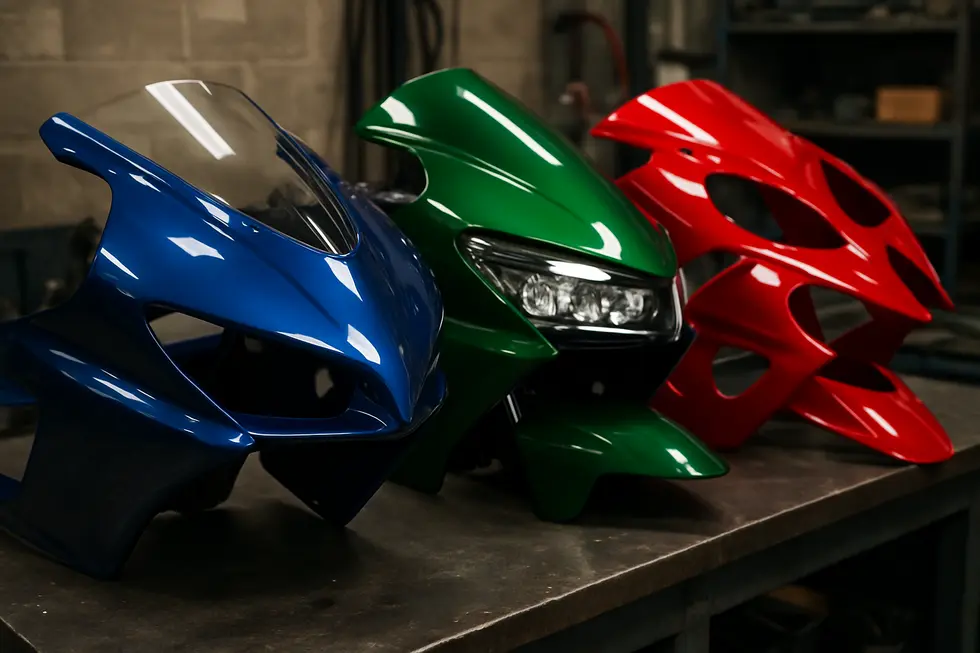
1. Balancing Strength and Style: Exploring Carbon Fiber and ABS Plastic in Motorcycle Fairings
Motorcycle fairings owe much of their functionality and appeal to the materials from which they are crafted, predominantly carbon fiber and ABS plastic. Carbon fiber stands out for its exceptional strength-to-weight ratio, delivering a rigid yet lightweight structure that enhances overall bike performance by reducing mass. Favored in high-performance and racing motorcycles, it offers a distinctive woven texture that conveys a premium, technical aesthetic prized by enthusiasts focused on speed and precision. However, the higher cost and manufacturing complexity of carbon fiber limit its use primarily to racing applications or bespoke upgrades.
In contrast, ABS plastic presents a highly versatile and cost-effective alternative. Its flexibility and impact resistance make it well-suited for everyday riding conditions. ABS can be precision molded to fit exact OEM specifications, enabling seamless installation and wide availability for replacement or customization. This material also supports diverse finishes—from solid vibrant colors to sophisticated faux carbon fiber patterns—allowing riders to tailor their bike’s appearance without the premium price of genuine carbon fiber. Moreover, ABS plastic’s durability ensures protection for both the motorcycle’s mechanical components and the rider against road debris and weather.
The choice between these materials often reflects a trade-off between performance ambitions and budget constraints. Many aftermarket kits cleverly blend the benefits, offering ABS base components with carbon fiber accents or faux carbon finishes that evoke high-end styling. This hybrid approach broadens options for riders who want to enhance their motorcycles’ look and protection while maintaining reasonable cost and durability.
This synergy of carbon fiber’s lightweight rigidity and ABS plastic’s resilience and customization potential illustrates how material technologies shape the modern motorcycle fairing market. For riders seeking insights and options on motorcycle fairings, exploring dedicated sources can provide valuable guidance tailored to individual needs and styles. One such resource offers a wide perspective on choosing high-quality fairings tailored to both daily riders and performance-focused enthusiasts.Kings Motorcycle Fairings overview on ABS plastic fairing kits
2. Creative Customization of Motorcycle Fairings: Colors, Textures, and Personalized Designs
Motorcycle fairings are not only functional aerodynamic components but also a key canvas for personal expression and style. Riders can extensively customize their fairings through a rich palette of colors and finishes, ranging from glossy, mirror-like sheens to flat matte coatings that evoke a stealthy aesthetic. Beyond basic paintwork, textured finishes such as faux carbon fiber or honeycomb patterns introduce depth and tactile interest, replicating high-performance materials while maintaining durability and weather resistance.
Adding to this visual dimension, custom decals and vinyl graphics provide versatile options to tailor a bike’s appearance without permanent alterations. These can include race-inspired motifs, brand logos, or intricate patterns that transform the fairings into bespoke art pieces. Vinyl wraps especially enable complex designs with ease of removal or replacement, giving riders flexibility to refresh their bike’s look on demand.
The quality of materials and the finishing process are crucial in supporting all these customizations. Most fairings use high-grade ABS plastic known for its resilience and OEM-level fit. Professional multi-layer paint procedures, incorporating primer, multiple paint coats, decal application, and protective clear coats, ensure long-lasting vibrancy against environmental stresses.
Customization packages often extend beyond the fairings themselves — matching tank covers, seat cowls, windscreens, and heat shields come integrated for cohesive styling and enhanced functionality. Precision injection molding and pre-drilled mounting points simplify installation and allow modular upgrades without complicated modifications.
For riders seeking ultimate personalization, some manufacturers offer bespoke design services. Here, customers submit inspirations or race replica concepts, resulting in tailor-made fairing kits that perfectly reflect individual tastes and performance demands. This wide spectrum of customization transforms motorcycle fairings into both a performance asset and a signature visual statement.
Explore more about the diverse and affordable customization options available with motorcycle fairings at Summit Fairings.
For further insights on custom paint, textures, and decals, consider detailed offerings like those presented at Kings Motorcycle Fairings.
3. Optimizing Aerodynamics and Performance Through Advanced Materials and Customizable Fairing Designs
Motorcycle fairings are engineered to harmonize aerodynamics with material innovation, striking a balance between reduced drag, enhanced rider comfort, and structural performance. Modern aerodynamic shapes like streamlined front fairings mitigate wind buffeting and channel airflow efficiently, significantly improving stability and comfort during prolonged rides. Computational Fluid Dynamics (CFD) plays a pivotal role in refining these shapes, enabling subtle enhancements such as integrated wing profiles that increase downforce without adding drag. These advances support superior handling, even in challenging crosswinds, while also improving cooling efficiency by directing air toward critical components.
Material selection elevates these aerodynamic benefits by reducing weight and increasing durability. Carbon fiber composites stand out for their outstanding strength-to-weight ratio, offering up to 40% weight savings compared to traditional fiberglass or aluminum. This reduction directly enhances acceleration, fuel efficiency, and nimble responsiveness. Additionally, carbon fiber’s resistance to corrosion and high thermal tolerance ensures longevity in harsh environments and allows for complex, aerodynamic geometries that heavier materials cannot easily accomplish.
Customization now extends beyond aesthetics to functional versatility. Riders can personalize fairings with a variety of finishes, including carbon fiber weaves and precise color matching, blending individual style with effective performance. Furthermore, adjustable aerodynamic elements and tailored fitments empower riders to optimize fairing characteristics for specific riding styles, whether racing agility or touring stability. These customizable features foster a seamless integration of personal expression and technical refinement.
Together, aerodynamic innovation, advanced materials, and thoughtful customization form a synergy that enhances motorcycle fairings beyond mere protection. They enable riders to experience improved speed, control, comfort, and style in one cohesive package. For those interested, a wide selection of customizable fairings provides options that unite these benefits effectively.
For a deep dive into aerodynamic development in high-performance motorcycles, see detailed analysis in CFD-driven fairing design here.
4. Precision Mounting Systems and Customizable Hardware for Optimal Fairing Fit and Durability
Motorcycle fairings are not only defined by their materials but also by the precision and adjustability of their mounting hardware, which ensures secure attachment and seamless integration with the motorcycle frame. This hardware often consists of corrosion-resistant metals like steel or aluminum alloys, finished with protective coatings such as matte black powder coating that enhance both longevity and visual appeal. The mounting systems typically include a range of brackets, bolts, clips, and screws designed to provide a stable, vibration-resistant connection that maintains fairing alignment even at high speeds.
Adjustable bracket kits are engineered to match specific motorcycle models, allowing riders to achieve precise positioning that complements their bike’s frame geometry and customized handlebars. This flexibility is vital because incompatible hardware can cause misalignment or stress points that degrade fairing integrity. Furthermore, screw and clip systems promote incremental tightening, preventing damage from overtightening and ensuring the fairings remain firmly in place with proper clearance, which contributes to aerodynamic efficiency.
Beyond durability, modern mounting hardware emphasizes weight reduction with lightweight yet strong alloys, which helps preserve motorcycle handling characteristics. Paired with advanced materials such as carbon fiber composites in the fairings themselves, this approach strikes a balance between robustness and minimal weight, crucial for performance-oriented motorcycles. The combining of high-grade materials and adjustable mounting systems supports both functional and aesthetic customization, enabling riders to tailor their motorcycles with complete fairing kits that include all essential components—from upper and lower fairings to integrated lighting modules and hardware.
This synergy of material innovation and customizable mounting solutions not only enhances installation ease but also extends the lifespan and performance of motorcycle fairings. For enthusiasts seeking in-depth options, exploring comprehensive fairing kits with matched hardware can offer both personalized style and improved ride quality. More details on installation and hardware specifics can be found in dedicated resources such as installation and mounting hardware details and through expert guides covering bracket compatibility and material benefits.
For a broader look at the customization possibilities, you can explore unmatched choices in motorcycle fairings.
5. How Advanced Materials and Tailored Designs Shape the Motorcycle Fairings Market and Economy
The evolution of motorcycle fairings is deeply intertwined with advancements in material technology and the growing demand for personalization. Modern fairings increasingly utilize sophisticated composites, such as carbon fiber fabrics paired with honeycomb cores and bio-based resins, which offer remarkable weight reduction and enhanced durability. These materials not only improve motorcycle handling and fuel efficiency but also contribute to superior thermal management and aesthetic versatility. Manufacturers leverage these innovations to craft fairings that balance strength with sleek design, ensuring performance gains without compromising rider comfort.
Customization plays a pivotal role in driving market growth by catering to enthusiasts seeking unique styles and improved functionality. Bespoke fairing options—ranging from custom-painted full bodies to hand-built belly pans—offer riders an opportunity to express individuality while benefiting from tailored aerodynamic and ergonomic enhancements. This trend elevates aftermarket accessory sales worldwide by blending form and function.
Flagship models exemplify this synergy when integrating advanced materials and aerodynamic refinements, such as downforce-generating wings, leading to measurable reductions in drag and improved cooling efficiency. Such innovations not only boost performance on the track but also enhance brand differentiation and support premium pricing strategies.
Economically, these developments spur an expanding supply chain for specialized composite materials and escalate research investments, fueling growth across related industries. Rising consumer disposable incomes in emerging markets further broaden the demographic reach, reinforcing the motorcycle accessories segment’s upward trajectory projected at a 7% annual growth rate through 2033.
The dynamic interplay of cutting-edge materials and customization trends thus firmly positions fairings as both a crucial performance component and a lucrative economic driver within the motorcycle industry. Those interested in exploring such innovations further can find comprehensive selections and customization insights at Summit Fairings’ blog.
For detailed technical perspectives on material advances impacting motorcycle components, see insights from industry leaders: Hexcel composites overview.
Final thoughts
Motorcycle fairings are indispensable for enhancing ride quality, performance efficiency, and visual appeal. The aerodynamic benefits reduce drag, facilitating higher speeds and improved fuel economy, while various fairing types address specific rider needs—ranging from full protective coverage to track-optimized forms. Material innovation and customization features ensure these components not only last but also provide personalized style and additional functional benefits such as improved lighting. For business owners, leveraging a deep understanding of fairing design, performance impact, and material technology enables the crafting of superior product selections, compelling marketing, and stronger customer loyalty. Integrating advanced fairing options into your motorcycle offerings sets the foundation for sustained growth and competitive distinction in a diverse motorcycling market.
Ready to elevate your ride? Summit Fairings delivers premium, custom-fit fairings that blend style and durability. Whether you’re chasing speed or turning heads, we’ve got your bike covered. Don’t wait—transform your machine today. Click, customize, and ride with confidence. Your perfect fairing is just a few clicks away. Act now!
About us
We are one of the leading motorcycle fairing export sites, with over 3,000 styles across almost all motorcycle models. Buy from summitfairings.com, and pay 10-40% less than the prices on other sites. If you have any questions, we promise we will have your answer within six hours.
RELATED POSTS
View all

